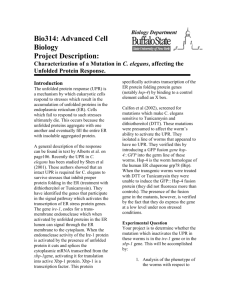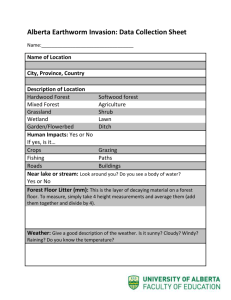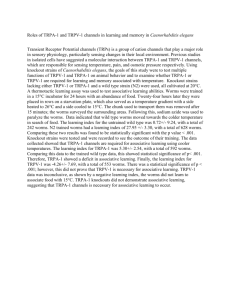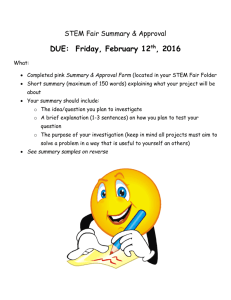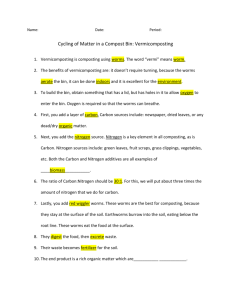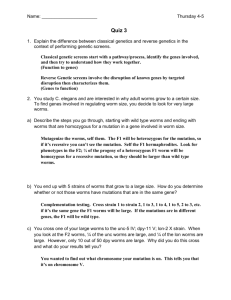Lab 3 Role of UPR in Surviving ER Stress
advertisement
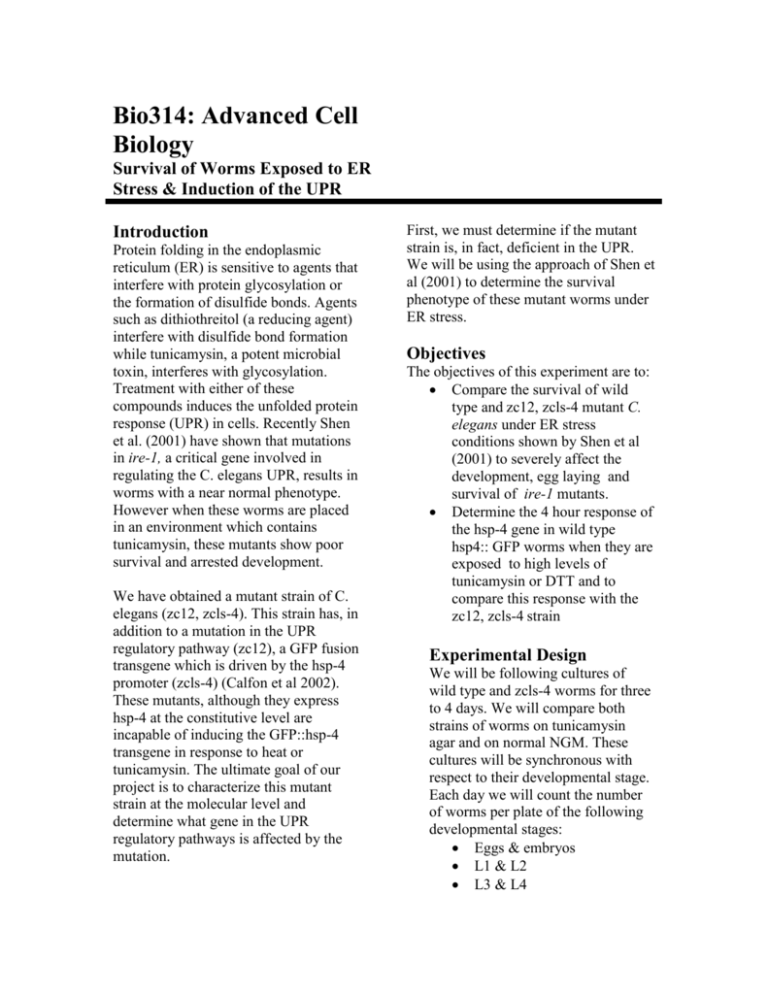
Bio314: Advanced Cell Biology Survival of Worms Exposed to ER Stress & Induction of the UPR Introduction Protein folding in the endoplasmic reticulum (ER) is sensitive to agents that interfere with protein glycosylation or the formation of disulfide bonds. Agents such as dithiothreitol (a reducing agent) interfere with disulfide bond formation while tunicamysin, a potent microbial toxin, interferes with glycosylation. Treatment with either of these compounds induces the unfolded protein response (UPR) in cells. Recently Shen et al. (2001) have shown that mutations in ire-1, a critical gene involved in regulating the C. elegans UPR, results in worms with a near normal phenotype. However when these worms are placed in an environment which contains tunicamysin, these mutants show poor survival and arrested development. We have obtained a mutant strain of C. elegans (zc12, zcls-4). This strain has, in addition to a mutation in the UPR regulatory pathway (zc12), a GFP fusion transgene which is driven by the hsp-4 promoter (zcls-4) (Calfon et al 2002). These mutants, although they express hsp-4 at the constitutive level are incapable of inducing the GFP::hsp-4 transgene in response to heat or tunicamysin. The ultimate goal of our project is to characterize this mutant strain at the molecular level and determine what gene in the UPR regulatory pathways is affected by the mutation. First, we must determine if the mutant strain is, in fact, deficient in the UPR. We will be using the approach of Shen et al (2001) to determine the survival phenotype of these mutant worms under ER stress. Objectives The objectives of this experiment are to: Compare the survival of wild type and zc12, zcls-4 mutant C. elegans under ER stress conditions shown by Shen et al (2001) to severely affect the development, egg laying and survival of ire-1 mutants. Determine the 4 hour response of the hsp-4 gene in wild type hsp4:: GFP worms when they are exposed to high levels of tunicamysin or DTT and to compare this response with the zc12, zcls-4 strain Experimental Design We will be following cultures of wild type and zcls-4 worms for three to 4 days. We will compare both strains of worms on tunicamysin agar and on normal NGM. These cultures will be synchronous with respect to their developmental stage. Each day we will count the number of worms per plate of the following developmental stages: Eggs & embryos L1 & L2 L3 & L4 Adults Dead worms Finally, we will compare the 4 hour hsp-4 response and survival zc12, zcls-4 and zcls-4, under severe stress from either DTT or tunicamysin. We will examine the worms for structural or behavioral responses to high levels of ER stress and assay for the UPR by examination of GFP hsp4 expression in the fluorescence microscope Procedure Survival and development: On Monday morning adult worms of the wild type and zc12, zcls-4 strains were placed on plates with 5µg/ml tunicamysin in NGM + OP50, or normal NGM agar + OP50 At 2:00 (during lecture period) you will remove the adults and count the number of eggs on each plate. Your instructors will show you how to remove worms from the plates Each day from Monday through Thursday you will count the numbers of eggs, L1+L2, L3+L4, adults and dead worms on each of the plates. Short term survival and induction of hsp-4: On Thursday at noon you will wash L2+L3 worms off normal plates and move them to plates containing, 28µg/ml tunicamysin, 2.5 mM DTT or normal medium. The wash will be done as previously, only you will use M9 buffer rather than distilled water for the wash. The worms will be briefly sedimented, resuspended in 100 µl M9 and carefully pipetted onto the appropriate plates. The plates will be placed in the 20oC incubator and checked each hour for 4 hours. The experimental setup is shown in the table below. Short Term ER Stress Experiment Strain/ Treatment zcls-4 (hsp-4 GFP) zc12, zcls-4 N2 (Wild type) Control 1 4 7 DTT 2 5 8 Tunic. 3 6 9 At hour 2 and hour 4 we will remove a few worms to agar pad slides and assess their level of hsp-4 induction by fluorescence microscopy. You should have recorded in your notebook: The class data on the long-term survival experiment. Descriptions of the general condition of the worms in each treatment group at the end of the long term experiment. Fluorescence micrographs of the 9 different experimental treatments at 2 hours and 4 hours after exposure. Literature Cited Alberts et al. Molecular Biology of the Cell, Fourth edition, Garland Science, New York (2002) p 706 Calfon et al (2002) Nature 415:92-96 Shen et al. (2001) Cell 107:893-903


